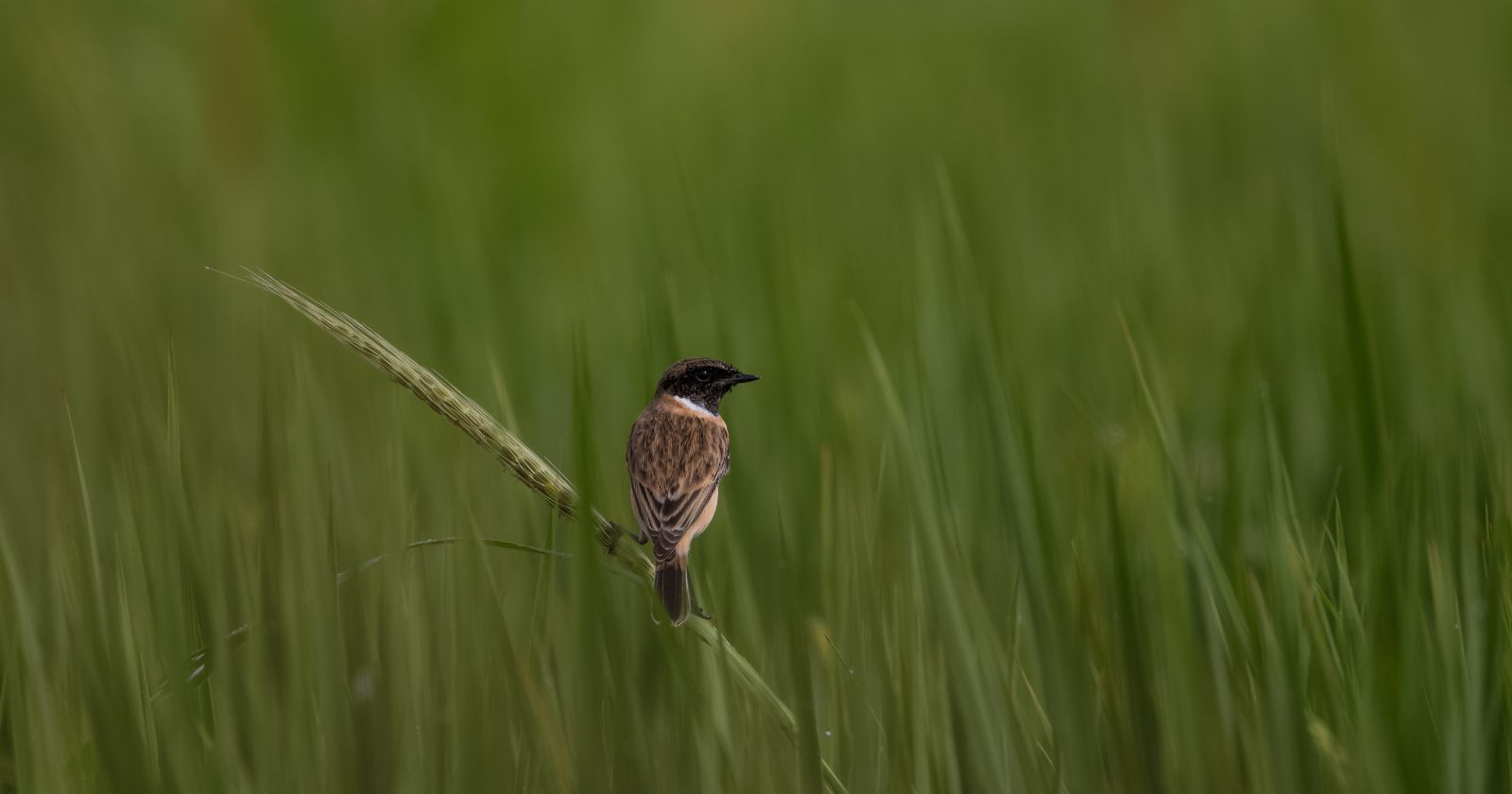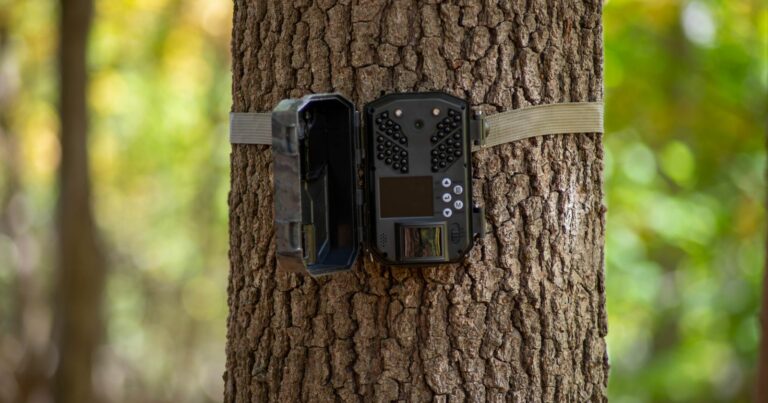Thinking of Using A Trail Cam for Bird Photography? Read This First
Do you love photographing colorful birds visiting your backyard feeders and baths? If so, you may be tempted to grab one of those affordable trail cameras to capture closer shots of finches, chickadees, and other feathered friends.
But hold up! While trail cams seem ideal for bird watching, they have some significant limitations you should understand first before you mount one expecting frame-filling photos.
In this article, I’ll share the frustrations I encountered trying to use my wildlife trail camera for bird photography up close. There are definite trade-offs compared to cameras designed specifically for avian subjects.
My experience taught me what these cameras can and can’t do well when it comes to observing backyard birds. I’ll show you how to set realistic expectations so you can still use a trail cam successfully without being disappointed later.
Read on to learn why trail cameras can struggle to capture the stunning images of songbirds you may be envisioning before you go strap one to a tree.
Trail Cameras Offer Versatile Outdoor Monitoring
One of the benefits of trail cameras is their versatility. They can be used to monitor backyards, gardens, feeders, nests, trails, and more to capture birds in their natural habitat. Most trail cams have the following useful features:
- Motion sensor – Detects movement and triggers the camera to record images/video. Useful for monitoring activity areas.
- Timelapse mode – Automatically takes images at set intervals to create a montage. Great for observing patterns.
- Day/night function – Infrared flash illuminates nighttime footage. Can record 24/7.
- Weatherproof housing – Durable casing protects the camera from outdoor elements.
- Long battery life – Power can last weeks or months on standard or rechargeable batteries.
- Compact size – Smaller models are easy to position discreetly in different locations.
These capabilities make trail cameras a flexible choice for unobtrusively recording bird behaviors and patterns. Position them to monitor backyard feeders, baths, nesting sites, or frequented natural areas.
Close-Focusing Ability May Be Limited
Trail cameras are designed primarily for scouting larger game at farther distances. As a result, the minimum focusing distance is usually 10-20 feet or more. This can make it challenging to capture sharp close-up shots of small birds.
The small lens and sensor optimized for distant wildlife photos also limit image quality for macro bird photography. So while you may get images of birds, they are often not high-resolution if the birds are within just a few feet of the camera.
To properly frame an individual bird in the shot, you generally need to be within 3-6 feet. Standard trail cameras may struggle to focus sharply at these ranges. So you sacrifice some image quality in exchange for the remote monitoring abilities.
Compact and Budget-Friendly Options Available
While pro-grade bird photography cameras can be expensive, there are plenty of budget-friendly trail cameras to try out. Many compact cams cost under $100 while still providing decent daytime images and night vision capability.
The small size allows flexibility in positioning. Strap them to deck posts, hang from branches, or mount to trees with bungee cords to watch feeders and baths. Just ensure they are placed at appropriate heights and distances for the camera’s focusing limitations.
While image quality may not rival an expensive DSLR telephoto setup, you can still capture the behaviors and personalities of visiting birds without breaking the bank.
Faster Trigger Speeds Capture Birds on the Move
Birds flit quickly from perch to feeder to bath, rarely sitting still for long. So fast trigger speeds are important to capture them in motion. Avoid trail cameras with trigger speeds slower than 1 second or you’ll miss a lot of shots.
Models with 0.5 second or faster triggers will provide better results. This enables the camera to wake quickly and snap before birds leave the frame. Features like burst mode or rapid-fire shot sequences also improve your chances of crisp, well-framed photos of active birds.
Night Vision Reveals Behaviors After Dark
If photographing nocturnal behaviors is important, be sure to get a trail cam with nighttime IR flash capability. Most models have IR LED arrays that automatically trigger and illuminate night footage while keeping the camera covert.
Look for ones with IR flash ranges of at least 50 feet so you can position the camera far enough away to frame feeders or baths without startling birds. The night vision footage will reveal owl and other nocturnal bird activities you normally miss after sunset.
Bird Feeder Cams Allow Close-up Shots
Purpose-built bird feeder cameras provide features tailored for bird photography including:
- Macro focusing as close as 1 foot to enable frame-filling shots.
- Higher resolution image sensors for sharper details.
- Lenses and viewpoints designed specifically to capture small birds on feeders.
- Adjustable IR flash intensity to not startle nighttime birds.
These specialized setups deliver better results for close-up bird portraiture and behavioral study compared to standard trail cameras. Though feeder cams lack the versatile wireless monitoring functions.
So if framing striking images and observing fine behaviors are higher priorities, a dedicated bird feeder camera is worth the investment for hobbyists.
Tips for Using Trail Cams to Observe Birds
While trail cameras have limitations for close bird photography, you can still use them effectively to study behaviors, patterns, and habitats:
- Mount cameras on rigid structures like posts or buildings instead of trees to minimize motion blur from branches waving in the wind.
- Angle cameras straight on rather than pointing up or down which can result in poorer framing and focus.
- Avoid positioning cameras looking into direct sunlight which will silhouette subjects and blow out images.
- Place high traffic areas like feeders and baths 10-20 feet from the camera for optimal focusing range.
- Use camouflage or discreet housing to prevent birds from recognizing the camera.
- Check camera aim periodically as shifts can happen from weather or curious wildlife.
With smart setup following the camera’s strengths, trail cams can deliver great supplemental footage for casual birders or avid ornithologists. Just be realistic about image quality limitations for documentary rather than artistic results.
Trail Cameras Can Be a Useful Tool for Observation
While specialized birding cameras are better suited for close-range portraits and fine behavior study, trail cameras still provide an affordable way to remotely monitor activity areas. They excel at capturing behaviors, travel patterns, preferred habitats, range maps, and seasonal changes year-round, day and night. Just position them in optimal vantage points 10 feet or farther from areas of interest.
If you already own a trail cam for wildlife, go ahead and experiment with using it creatively for bird watching too. You’ll enjoy seeing their antics and may be surprised by rare or shy species only a remotely triggered camera can detect. Just don’t expect ultra-crisp, frame-filling images of birds at feeders.
For casual birders, trail cams are a fun supplement to grab shots of neighborhood birds. Avid birdwatchers will want to employ additional tools for scientific study. Either way, strapping a versatile trail camera into a tree will open your eyes to the hidden lives of birds that visit your backyard and beyond.
Frequently Asked Questions
What is the best trail camera trigger speed for birds?
Look for trail cameras with a trigger speed of 0.5 seconds or faster. This helps ensure sharp shots of active, fast-moving birds.
What is the minimum focus distance I need?
To frame small birds closely, you need a minimum focus distance of around 3-6 feet or less. Standard trail cameras may only focus down to 10-20 feet.
Do I need a camera with night vision?
If recording nocturnal bird behaviors is important, choose a trail cam with infrared night vision capability.
Will birds be scared off by the camera?
Use camouflaged housing and position the camera far enough away (10+ feet) to not startle birds. Avoid models with bright flash.
Do trail cameras work well in rain or snow?
Look for weatherproof trail camera models rated for all conditions. The housing protects the camera from the elements.


